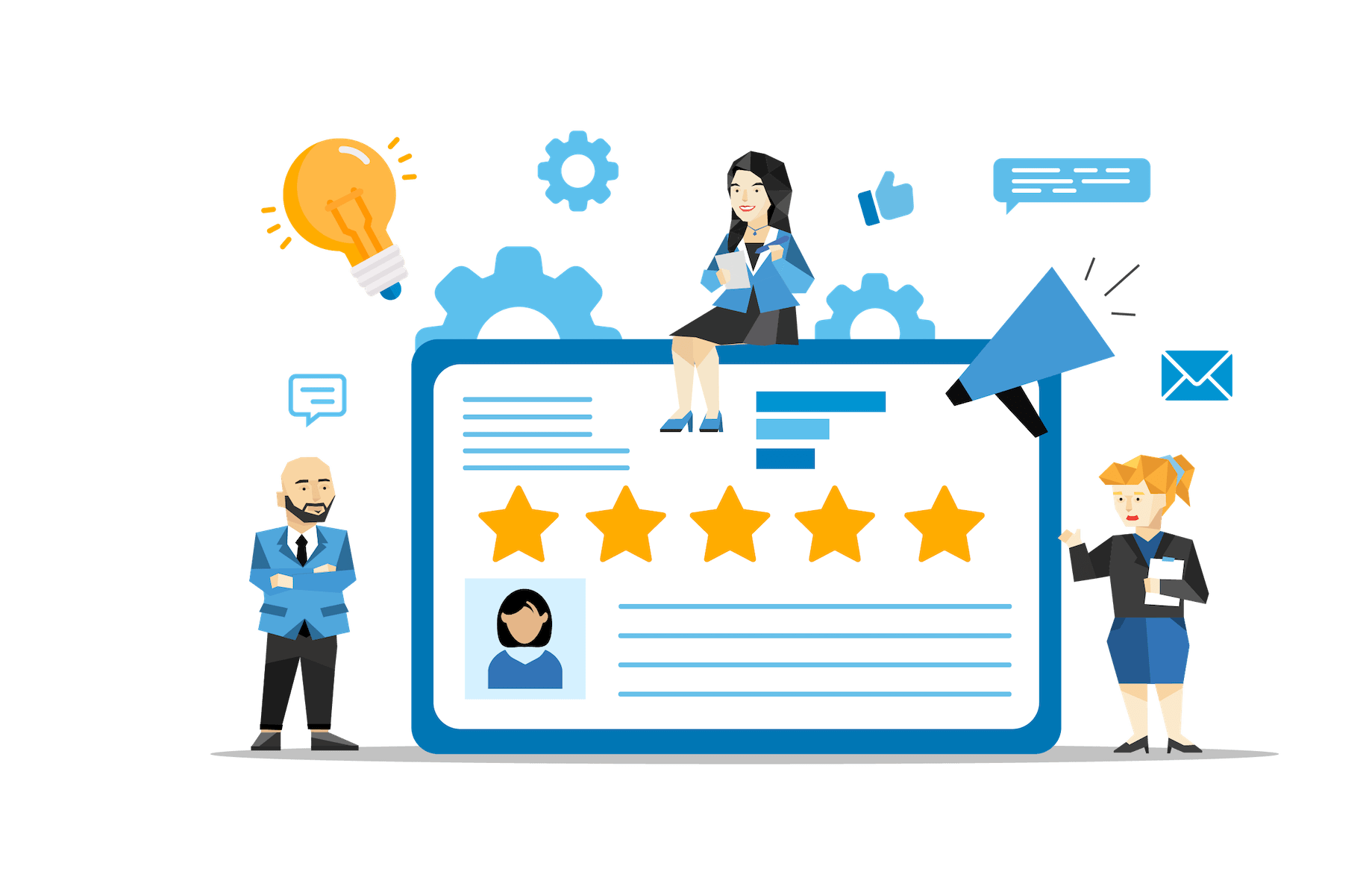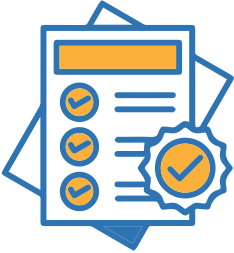Cross-Selling And Upselling To Existing Clients And Customers
The success of a business is ultimately built on the ability to generate revenue. The only way to do this is by increasing sales over time. Many businesses invest heavily in their marketing efforts, hoping to increase brand awareness and attract more leads. They believe that new leads present new sales opportunities; however, new leads do not always present the best potential sales opportunities. The most effective way to identify new sales opportunities and to both maintain, and increase revenue, is by focusing on your existing customers.
The challenge that businesses face when selling to existing customers is actually identifying new sales opportunities. You can’t just promote random products or services to existing customers or you risk alienating them. If your marketing efforts aren’t relevant to customers, there may be no reason for them to continue doing business with you. You should be able to find new sales opportunities among your existing customer base through the use of cross-selling and upselling techniques.
Cross-Selling Versus Upselling
Cross-selling and upselling are both sales methods used to increase revenue on top of a purchase that a customer is about to make or a purchase that they have made in the past. Cross-selling is a way to complement the purchase with an additional service offering. Take for example a company that sells electronic office equipment to smaller businesses. If their client is preparing to order new computer systems for their office, then the company might recommend that their client also purchase their printers to complement those computer systems. The printer is a product from a different category that would complement the initial purchase.
Upselling is a bit different than cross-selling. Instead of attempting to sell the client additional products or services from a different category, it involves encouraging the client to upgrade their purchase in some way. For example, a software company might try to upsell a client by convincing them to upgrade their software to a premium version that comes with more features at an additional cost. Another example of upselling is convincing a client to purchase the software as part of a software package that includes additional applications instead of simply buying the software on its own.
Cross-selling and upselling opportunities will often present themselves as customers are making a purchase; however, opportunities can also be identified through regular engagement with your existing customers and by tracking their behavior, both in the actions that they take on your website as well as through their purchase history. Maintaining good communication with customers will also shed light on the needs of your customers and position you to be the trusted advisor with the solution to these needs.
Cross-Selling And Upselling With Purpose As Part Of Business Development
Revenue is important, but cross-selling and upselling is about more than just boosting sales. When done appropriately (meaning that the products or services used to target customers are relevant to their purchases as well as to their needs), it can go a long way towards developing your business. Effective cross-selling and upselling strategies can help any organization in multiple ways:
Increase Sales
Finding new cross-selling and upselling opportunities with existing customers can lead to more sales than focusing solely on generating sales from new prospects. There are many reasons for this, the chief one being that current customers have an existing relationship with your organization. They trust you and have already done the research, which means that they will be more willing to make another purchase. New prospects still need to be nurtured through the buyer’s journey, so they will need to spend more time identifying their needs, comparing solutions, and researching their options.
The relationship that you’ve fostered with existing customers will help to increase your sales if you are able to identify the relevant cross-selling and upselling opportunities. And this isn’t just an assumption — the numbers back it up. The chances of selling to a new prospect are only 5 to 20 percent, whereas the chances of selling to an existing customer are between 60 and 70 percent. You’re much more likely to generate additional sales from existing customers than you are from new prospects by taking advantage of cross-selling and upselling opportunities.
Increase ROI
Acquiring new customers can be costly. Consider your marketing budget and how much is invested in attracting new prospects and nurturing them. Your customer acquisition cost (CAC) is determined by dividing the amount of money you spent on marketing for new leads and prospects over a specific period of time by the number of customers you’ve obtained within that same period. This means that if you spent $1,000 in one month and you sold your product or service to 100 customers over that same period, then your CAC was $10 per customer. You can assume that each sale you make to a new customer will cost around that much.
However, if you manage to upsell or cross-sell to your existing customers, those sales will cost much less since you didn’t have to pay another $10 to acquire that customer. The more purchases your existing customers make, the more you’ll increase the ROI on your initial CAC.
Improve Customer Loyalty
There’s a common misconception that cross-selling and upselling come off as too opportunistic, that it will make your organization seem too greedy in your pursuit to increase profits. While this can be true if you’re trying to upsell and cross-sell every product and service you offer without any consideration to the appropriateness of the offer (whether it meets the needs of the customer or is relevant to their purchase), when done strategically it can actually boost customer loyalty.
Customers appreciate when you’re paying attention to their needs and are finding and presenting new solutions that can improve their business. For example, if they are subscribing to a SaaS solution that you provide and you realize that their needs have expanded as their business has grown, you can present them with an upgraded option that could meet those needs.
Finding relevant cross-selling and upselling opportunities shows your client that you are paying attention to their needs and challenges and that you are actively trying to find ways to help them when you can. Because successful cross-selling and upselling will improve customer loyalty, you will also reap these benefits:
Reduce Churn
The more purchases a customer makes, the less likely they are to try a competing product or service. Successful cross-selling and upselling indicates that the customer was happy with their previous purchase and that they trust your recommendation. However, if you don’t have a cross-selling or upselling strategy in place, customers are more likely to move on.
Customers won’t feel a sense of loyalty fostered by the regular use of your product or service. Nor will your company remain at the top of their minds. Cross-selling and upselling requires regular engagement and is considered a form of engagement in itself. A lack of engagement will cause disinterest, they may even forget about you. But boosting customer loyalty via cross-selling and upselling can help reduce your customer churn rate and improve customer retention. It’s estimated that increasing your customer retention by 5 percent can increase your profits from anywhere between 25 percent to 95 percent.
Increase Customer Lifetime Value
The Customer Lifetime Value (CLV) refers to the net profit contribution a customer makes to your business over time. The higher the CLV the better since the customer is generating more revenue without your company having to invest anything extra on top of the original CAC. Cross-selling and upselling are effective ways to increase the CLV of your customers.
Increase Competitive Advantage
Retaining your customers inherently provides your company with an advantage over your competition. The more customers you retain, the fewer prospects your competitors have. A lack of loyalty can cause your customers to jump ship to a competitor. By not making an effort to retain your customers, you not only hurt your ability to generate more revenue, but you strengthen your competition as well. Relevant cross-selling and upselling will keep your customers loyal and help bolster your competitive advantage.
Improve Customer Experience
Generating more sales from existing customers requires providing them a good customer experience. This doesn’t just refer to their initial experience as a prospect — it refers to the ongoing customer experience that they have over the lifetime of their relationship with your organization, however long that might last. Cross-selling and upselling are an effective way to improve their customer experience in a number of ways.
By presenting a cross-selling or upselling opportunity to a customer, you engage with them. Engagement shows interest in their needs, which improves their experience. And customers don’t always have the time to search through all of your offerings to identify additional products or services that might benefit them. Some may not even realize you have other products or services that could help meet their needs. You’re providing a service by simply making them aware of these cross-selling and upselling opportunities.
Finally, some customers may not realize that they have a need until you educate them and present a solution to that need. For example, a customer might purchase a basic version of a software solution. However, through interaction with that customer and by analyzing their online behavior, you might realize that they could benefit from the additional features offered by a premium version of that software. You can then inform them about these features and how they can benefit your customers via an email drip campaign, educating them before presenting them with an upselling opportunity.
Attract More High-Quality Prospects
An effective cross-selling and upselling strategy will not only help increase revenue from your existing customer base, but it could also potentially help to attract new leads. First of all, a happy long-term customer with a strong relationship with your organization is much more likely to recommend new prospects to your company. Cross-selling and upselling will be a good way to foster a strong relationship with your customers when done properly.
There might also be an opportunity to partner up with a non-competitive business in your industry that offers products or services that could complement yours. A partnership would allow you to cross-sell their products and services to your customers. You would be sending your customers their way, but this could prove to be very beneficial in the long-term. This is because your partner would do the same for you, sending qualified prospects your way who will be much more likely to make a purchase than any new prospects you’ve attracted using your traditional marketing methods. By recommending relevant products and services that are not your own, you will appear to have your customers’ best interests at heart, and build stronger brand trust and loyalty with them.
Creating A Cross-Selling And Upselling Strategy
Cross-selling and upselling shouldn’t just be about pushing random products and services on existing customers. Just because they’ve made a purchase before doesn’t mean that they’ll buy anything you put in front of them. The opportunity to cross-sell or upsell must present itself before you can target your customers. Otherwise, your efforts to cross-sell or upsell may come off as being overly promotional and even spam-like. You’re likely to drive customers away and lose a significant amount of potential revenue.
To successfully identify cross-selling and upselling opportunities, first identify the needs of your customers so that you can effectively present their options to them. This should be an ongoing process. Even though you may have done this legwork prior to their initial purchase, needs tend to change. No customer will remain exactly the same over the course of their relationship with them.
Build Customer Profiles
Although you should have fully developed buyer personas that you can use to continue marketing to your existing customer base, it’s helpful to build detailed customer profiles to discover specific cross-selling and upselling opportunities for individual customers. Since they are already customers, their information is already available to you.
Continue tracking things like their purchasing history, their behavior (such as whether they’re opening certain emails, downloading certain offers, liking or sharing content) and more. With detailed customer profiles at your fingertips, it will become easier to identify appropriate and relevant sales opportunities when they present themselves.
Develop The Customer Journey
The customer journey is different for every customer. The type, size, and complexity of their organization will affect what types of solutions they’ll need. Many businesses assume that the journey ends with a sale; however, if this is how you view your customers, then this is where your revenue will stop as well. Before you can begin identifying and presenting new cross-selling and upselling opportunities, you will need to nurture your customers through the enablement and adoption stages.
During the enablement stage, make sure that the customer is properly onboarded and their expectations prior to the sale are met. During the adoption stage, promote adoption and usage of your product or service. If they aren’t using your product or service or getting the most out of it, they’ll be less likely to make another purchase.
Finally, you’ll reach the growth stage. During this stage, you will identify and present new cross-selling and upselling opportunities in order to provide more value to your customers’ experience.
Segment Your Customers
Segmenting your customer list will make it easier to identify who is more likely to take advantage of cross-selling and upselling opportunities as well as allow you to target customers with more effective and relevant marketing efforts.
Segment Customers Based On CLV Potential
You can obtain a lot of information about how happy a customer is by the reviews that they leave online, the feedback that they provide on social media, the customer surveys that you send out, and by direct engagement. Use this information to segment your existing customers into two categories: those who are unlikely to provide a high CLV and those who are more likely to provide a high CLV.
Those that are unlikely to provide a high CLV may be unhappy with the product or service, with the customer experience, or with something else. Although you shouldn’t dismiss them altogether (good customer service should address unhappy customers — at the very least you may be able to obtain feedback on how to prevent unhappy experiences in the future), they are unlikely to jump at any cross-selling or upselling opportunities presented to them.
Segment Customers For Continued Marketing Efforts
Cross-selling and upselling are rarely as easy as just emailing your customers an advertisement for a product or service. It requires investing some effort into nurturing them. Different customers have different needs, which means that not only will your cross-selling and upselling efforts differ from one customer to another, but your marketing efforts should as well. Segment your customers even further by things like demographics, behavior, industry, location, product/service ownership, usage, and interest.
Map Products/Services To Different Segments
Once you’ve segmented your customers, you’ll find that the cross-selling and upselling opportunities that you discover for one customer will often be relevant for other customers within their segment, making it easier and more efficient to nurture, educate, and present new sales opportunities to your existing customer base.
Find Cross-Selling And Upselling Opportunities
Finding cross-selling and upselling opportunities among your existing customer base won’t just help you to increase your revenue, it will also help drive business development in many ways, from improving your ROI to increasing your customer loyalty. The advantages of cross-selling and upselling can’t be overstated. Create a strategy that will allow you to discover, identify, and present relevant sales opportunities to your existing customers and clients.
It’s crucial that this strategy should focus on continued engagement — not just leading up to and at the point of sale, but also between sales opportunities. It’s through your engagement with your customers that many cross-selling and upselling opportunities will reveal themselves.















